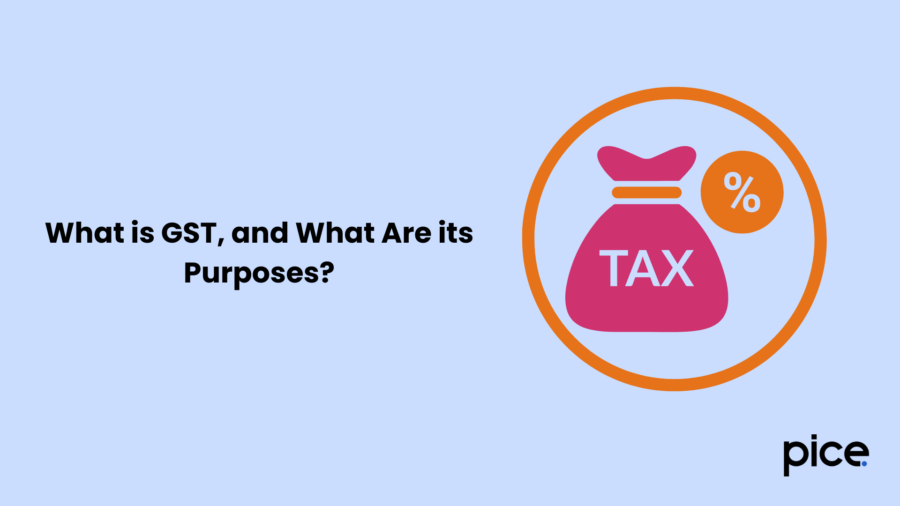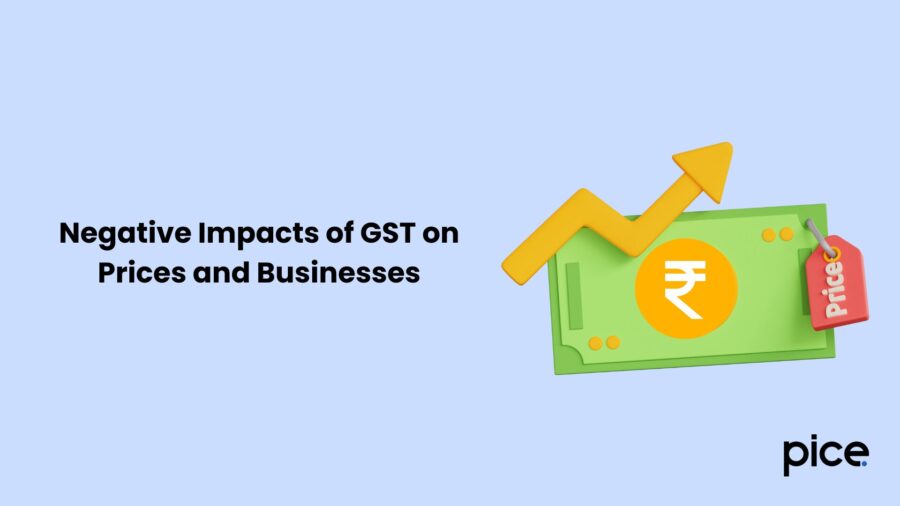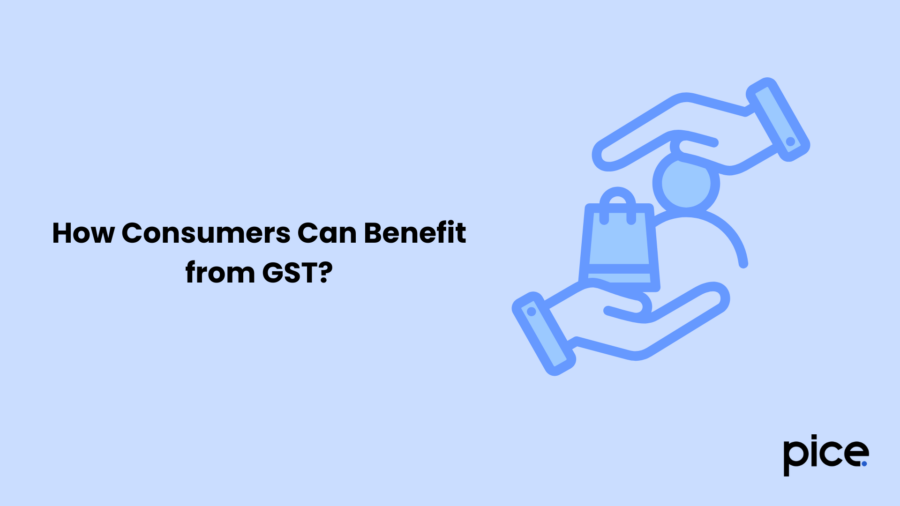Know Effect of GST on Prices of Goods and Services
- 30 Jun 25
- 9 mins

Know Effect of GST on Prices of Goods and Services
Key Takeaways
- GST unified India's complex tax structure by replacing multiple indirect taxes with a single, transparent system.
- It eliminated cascading taxes and lowered production costs, reducing retail prices in sectors like FMCG and electronics.
- Small and medium enterprises (SMEs) faced initial compliance burdens and cash flow issues due to digital tax systems.
- Certain sectors like healthcare and real estate saw increased costs due to the unavailability of input tax credits.
- GST enhanced consumer benefits through better price transparency, reduced tax evasion, and fairer pricing mechanisms.
The goods and services tax (GST) revolutionized the Indian taxation system, doing away with many existing indirect taxes, such as VAT, excise duty, and service tax, and thereby united them into one single structure. Its introduction caused a transformation in tax collection, pricing, supply chains, and the totality of business operations.
This article aims to deal with the cause of effect of goods prices due to GST and its effects on STPI sectors and how the reform has impacted the entire Indian economy together with small and medium sized enterprises, healthcare businesses, and Indian business owners.
What is GST, and What Are its Purposes?

Goods and Services Tax (GST) is a comprehensive and multi-staged indirect tax that replaced all the fragmented indirect tax systems of the country and introduced a destination-based tax on commodities and services. The many forms of taxes which GST has replaced include VAT, excise duty, service tax, and central sales tax. This new form of tax would create a standardized, transparent, and simplified regime of tax all over the country.
GST is applicable to all goods or services sales except for a few exempted items such as liquor and petroleum products, which are still under the ambit of duties of the state. GST will consist of three main components. CGST is applicable to the supply of goods within a state, SGST is applicable to the supply of goods between the states, and IGST is applicable in cases where goods are imported into the country. Through this seamless flow of input tax credits, GST would be eliminating the cascading effect of taxes and providing uniformity in taxation across the country.
GST is intended to merge the tax systems into a common market, create efficient tax compliance, minimize administrative costs, broaden the tax net, and reduce tax avoidance while encouraging the formalization of the economy.
GST also reduces compliance cost burden on businesses and augments business pricing simplicity and thereby provides strength to the Indian economy to have a level playing field for micro, small- and medium-sized enterprises as well as large corporations.
Positive Effects of GST on Prices of Goods
GST has brought many long-term benefits to the Indian business ecosystem. While the initial phase of GST implementation came with its share of challenges, the current phase has largely streamlined business pricing, operations, and compliance.
1. Reduction in Cascading Taxes
One of the most significant advantages of GST is eliminating the cascading effect of multiple taxes. Earlier, businesses had to pay taxes on taxes, like excise duty, followed by VAT. This increased the cost structure of goods, inflating consumer prices.
With GST, the flow of input tax credit ensures that tax paid at earlier stages can be claimed as credit at subsequent stages, thereby reducing the overall tax burden on businesses. This has led to a reduction in prices for various consumer products.
2. Simplified and Transparent Tax Structure
GST offers a unified and transparent tax structure. This helps businesses across different sizes understand and plan for business costs more effectively. It has also encouraged accountable business ecosystems by minimising tax evasion through mandatory invoicing and digital filings.
3. Decrease in Production Costs
For manufacturers and service providers, the availability of input tax credits on goods and services used in the production and delivery process reduces production costs. This cost efficiency can translate into more attractive products and moderate consumer prices.
4. Lower Retail Prices and Consumer Relief
Due to reduced tax rates, retail prices in the FMCG, electronics, and automotive sectors have dropped. Consumer prices in some categories have become more affordable, improving consumption rates and customer satisfaction.
5. Boost to Economic Growth
GST supports economic growth by promoting efficiency in the tax collection process. It also enhances the competitiveness of Indian businesses by allowing easier compliance with tax regulations, lowering compliance costs, and making exports more tax-efficient due to the Integrated Goods and Services Tax (IGST) system.
Negative Impacts of GST on Prices and Businesses

Despite its advantages, the GST system has negatively impacted specific sectors and products, especially during its initial phase.
1. Increased Costs for Certain Goods and Services
Although GST simplified taxation, it also increased prices for some products and services that previously enjoyed lower tax rates. For instance, the textile industry, restaurant services, telecom, insurance, and certain luxury items have witnessed higher GST rates, which resulted in inflated prices. These sectors now bear a heavier tax burden, leading to elevated consumer prices and reduced demand in price-sensitive markets.
2. High Compliance and Administrative Burdens
The shift to GST introduced a complex web of business compliances, including multiple filings, returns, reconciliations, and the need for GST-enabled digital tools. Small and medium enterprises struggled to meet these compliance rates, resulting in increased administrative burdens and a rise in compliance costs. For businesses lacking tech-savvy resources, this was a significant operational strain.
3. Cash Flow and Working Capital Issues
Under GST, businesses must pay tax at the point of invoice generation, not when the payment is actually received. This has impacted core business operations, particularly for service providers and small traders, as it ties up working capital and affects liquidity. Delayed payments combined with upfront tax payments can disrupt cash flow and raise business costs.
4. Unavailability of Input Tax Credit for Certain Sectors
Some sectors, like healthcare businesses and real estate, are either exempt or partially exempt from GST. As a result, companies in these sectors cannot claim full input tax credit, increasing their effective cost price. This loss of credit inflates operational expenses and may lead to a price increase for consumers.
5. Impact on Small Business Profit Margins
For many small and Indian business owners, GST has introduced new costs related to compliance, software adoption, and tax consultancy. These additional expenses often eat into business profit margins, especially when the ability to pass on these costs to consumers is limited. This has discouraged some from scaling or forced some to operate informally to avoid the burden on businesses imposed by GST.
How Consumers Can Benefit from GST?

The introduction of GST has been so beneficial to consumers in India that it has stabilized prices and moderated them also. Earlier, the prices of goods were increased artificially and mostly non-transparently due to multiple layers of indirect taxes, including VAT and excise duty and service tax, on them. GST has replaced it with a system where tax is levied only on value addition at each stage and, therefore, brought forth a more transparent and moderate price structure.
GST reduced the price of commodities during their distribution and sale; many essential and daily usage goods were either exempted from taxation or placed in a lower slab. Items like soaps, detergents, and packaged foods have had a reduced retail price, facilitating better access to consumer products.
GST saves businesses from incurring input costs with seamless flow of credits for input taxes, which they mostly extend to consumers in lower prices or better savings.
It has made the business environment more accountable in keeping consumers happy through transparent invoicing and reduced tax evasion. Over the long run, consumers can expect to benefit from fair pricing, better quality, and greater access to attractive products in the country.
Conclusion
The Goods and Services Tax (GST) has transformed the Indian taxation system by promoting uniform taxation, simplifying trade, and enhancing transparency. While its impact on STPI units, SMEs, and other sectors is mixed, GST has led to more competitive pricing and better-quality consumer products. Businesses now operate in a more efficient, accountable environment with reduced tax evasion.
As India adapts further, GST promises long-term benefits, stronger business foundations, and steady economic growth across industries and regions.
💡If you want to streamline your invoices and make payments via credit or debit card or UPI, consider using the PICE App. Explore the PICE App today and take your business to new heights.
 By
By 

















